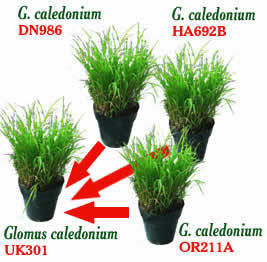Botanical Code and Rules of Nomenclature
The need for type specimens is clearly stated in the Botanical Code and rules of nomenclature. Such specimens for glomeromycotan species consist primarily of spores preserved in a liquid medium (lactophenol, formalin, azide) and mounted permanently on glass slides. These spores often change their appearance and internal structure as a result of degradation in the normal process of senescence after death or because of preservative-induced changes over time. Many type specimens also do not reflect morphology of healthy spores because they were collected from field soils and were either in poor condition or parasitized. We have found the types to be most useful when they are compared against healthy specimens obtained from a living culture. Schüßler and Walker (2010) have erected some ex-epitypes (cultures with provenance to type material) to link morphological and sequence data sets. We make use of reference cultures (listed below) because they may or may not be linked to type material but still provide a living standard for comparative analyses.

Since all cultures of the 1200+ accessions in the collection are started with spores of the organism, species identity (named or unnamed) must be defined for taxonomic reasons as well as for record-keeping and database management. To accomplish this purpose, spores of each accession are compared to those of other putative species in the collection using the following protocol:
- If the organism has one or more unique characters, it is established as a reference culture for an established or a new species.
- The reference culture is assigned a Latin binomial name if it can be linked definitively to a named species by the following criteria:
- Shared features with a type specimen in good structural condition.
- Close match with details of a published description or redescription.
- Verification in disputed or tentative cases with identifications made by authors of protologues or other taxonomists having experience with the species in question.
- An author of a prologue or collaborating with authors of a species.
- One or more of these criteria have been used to ascertain the reference cultures now recognized in INVAM and listed in the table below. For reference culture that could not be linked to a classified species, then this accession was assigned a genus name (based on well-established morphological criteria) and a numerical code based on database record number as a temporary specific epithet. All pertinent accessions with the same suite of traits as those of the reference culture were grouped together. This grouping process occurred whether or not species were named.
Starred reference species are not available for distribution for various reasons. Some species in the collection are not listed here because not enough criteria are met at this time to assign names with confidence.
